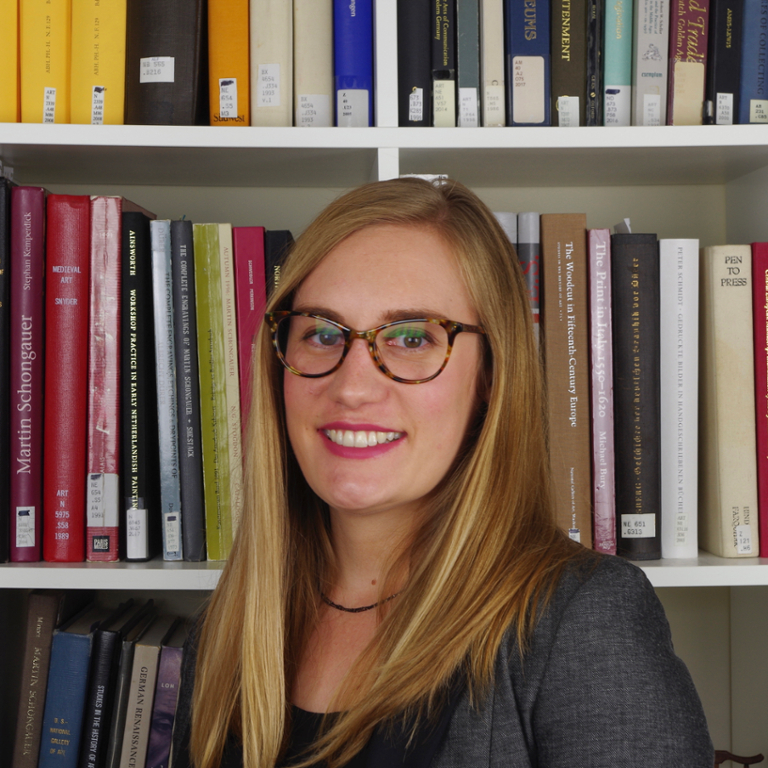The Department of Art History applauds Erin Hennessey, who recently completed her Ph.D. in Art History.
Dr. Hennessey described her dissertation as follows:
This dissertation offers a reassessment of one of the most famous engravings of the fifteenth century, the ca. 1470 Death of the Virgin produced by the workshop of Martin Schongauer. Scholars have long considered this work an epoch-making print, with its compositional and iconographical approaches to the subject and its advances in engraving technique understood as a reflection of Martin Schongauer's supposed creative genius. However, this narrative is fundamentally inaccurate, as it fails to account for either the shared labor of workshop practice or the engraving's calculated engagements with other modes of artisanal production. Rather than a declaration of individual creativity, the engraving offers a profound indication of the interplay between novelty and tradition in early modern visual culture. The interplay is visible not only in the engraving's engagement with the pictorial tradition for Death of the Virgin scenes, but also in the numerous repetitions of its design that were produced in the decades following its publication. In fact, this very groundswell of engagement was necessary to enshrine the Death of the Virgin as the pictorial baseline appreciated by modern scholars. Rather than reiterating our scholarly narrative about the creative individual of Martin Schongauer, the early modern evidence points to the importance of pictorial repetition in the establishment of the object's authority.
Photo: Martin Schongauer, Death of the Virgin, ca. 1470, engraving


 The College of Arts
The College of Arts